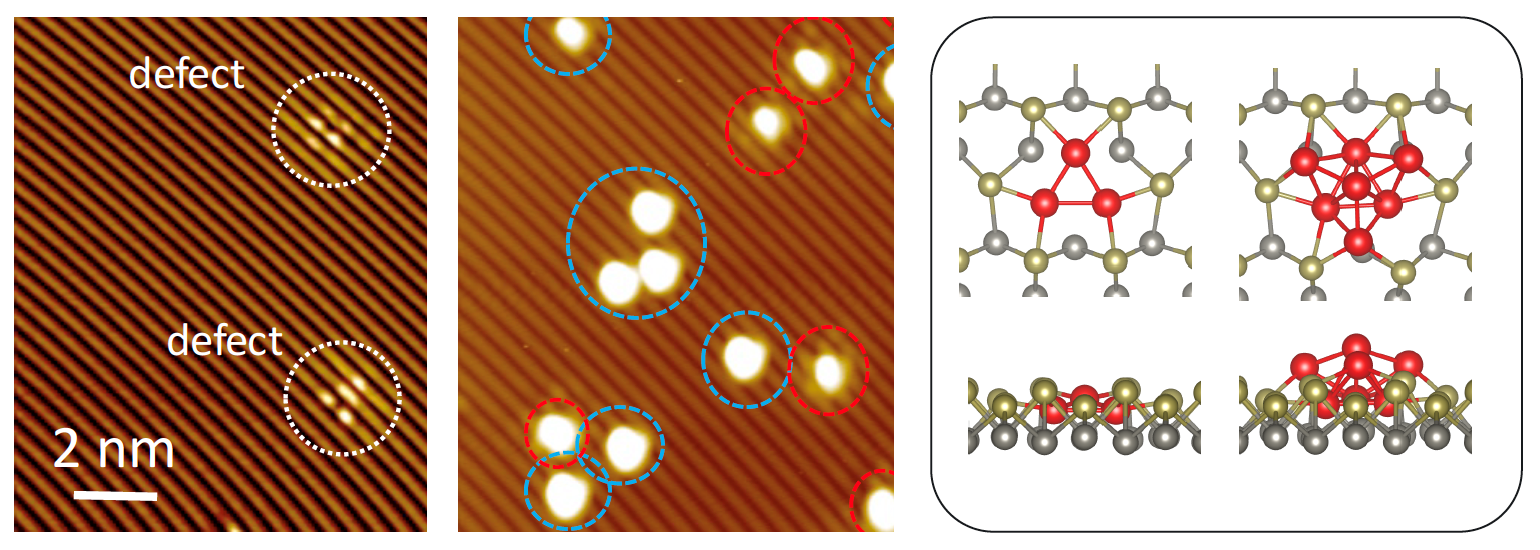CDI Project: Response of Functional Materials to Changing Thermo-Chemical Environments

Return to Functional Materials Use Case
PI: Peter Sushko
Project Team: Zexi Lu, Micah Prange, Yang Wang, Zdenek Dohnalek
Project Term: October 2018 to September 2021
Key Science Questions:
- How can we enable strong chemical binding of metal contacts to functional quasi-two-dimensional (2D) van-der-Waals materials without affecting their functional properties?
- How do zero-dimensional defects and quasi-one-dimensional edges in 2D materials affect the binding of metal atoms and clusters?
- Can we induce low-dimensional magnetism and novel electronic properties by exploiting their interactions with metallic species?
Project Description: To harness properties of functional materials in practical devices, these materials need to be furnished with electrical contacts that are robust, yet, provide negligible interference with the functional properties. This is particularly challenging in the case of a wide and growing class of layered quasi-two-dimensional (2D) van-der-Waals materials. On the one hand, weak inter-layer bonding allows for exfoliation of individual layers that exhibit remarkable quantum behavior. On the other hand, weak bonding hampers our ability to create atomically precise electrical contacts that maintain their structure and properties across temperatures that correspond to processing (300 K and above) and operating (down to ~0 K) conditions.
Here, we examine how zero-dimensional and one-dimensional defects in quasi-2D materials can be used to anchor individual metal atoms and metal clusters and how these adsorbed species can affect the electronic structure of the materials. Of particular interest are understanding:
- factors that determine interactions and diffusion of adsorbed metal atoms and clusters on the defect-free sheets of 2D materials and the effect of isolated point defects, defect complexes, and quasi-one-dimensional defects, such as edges, on the binding energies and shape of the adsorbed species
- how the choice of deposited metal species and the defect-driven control over the resulting structures can be used to induce electronic charge redistribution and local magnetism, thus leading to control over electronic properties.
By learning to navigate the space of control parameters, the project team aims to enable a predictive understanding of how to seamlessly integrate 2D van-der-Waals materials into complex device architectures and how to tailor their properties. Specific objectives include revealing:
- how structural inhomogeneities in the 2D materials affects the dynamics of adsorbed metal species
- how the adsorbed metal species affect electron charge distribution and spin density in these systems